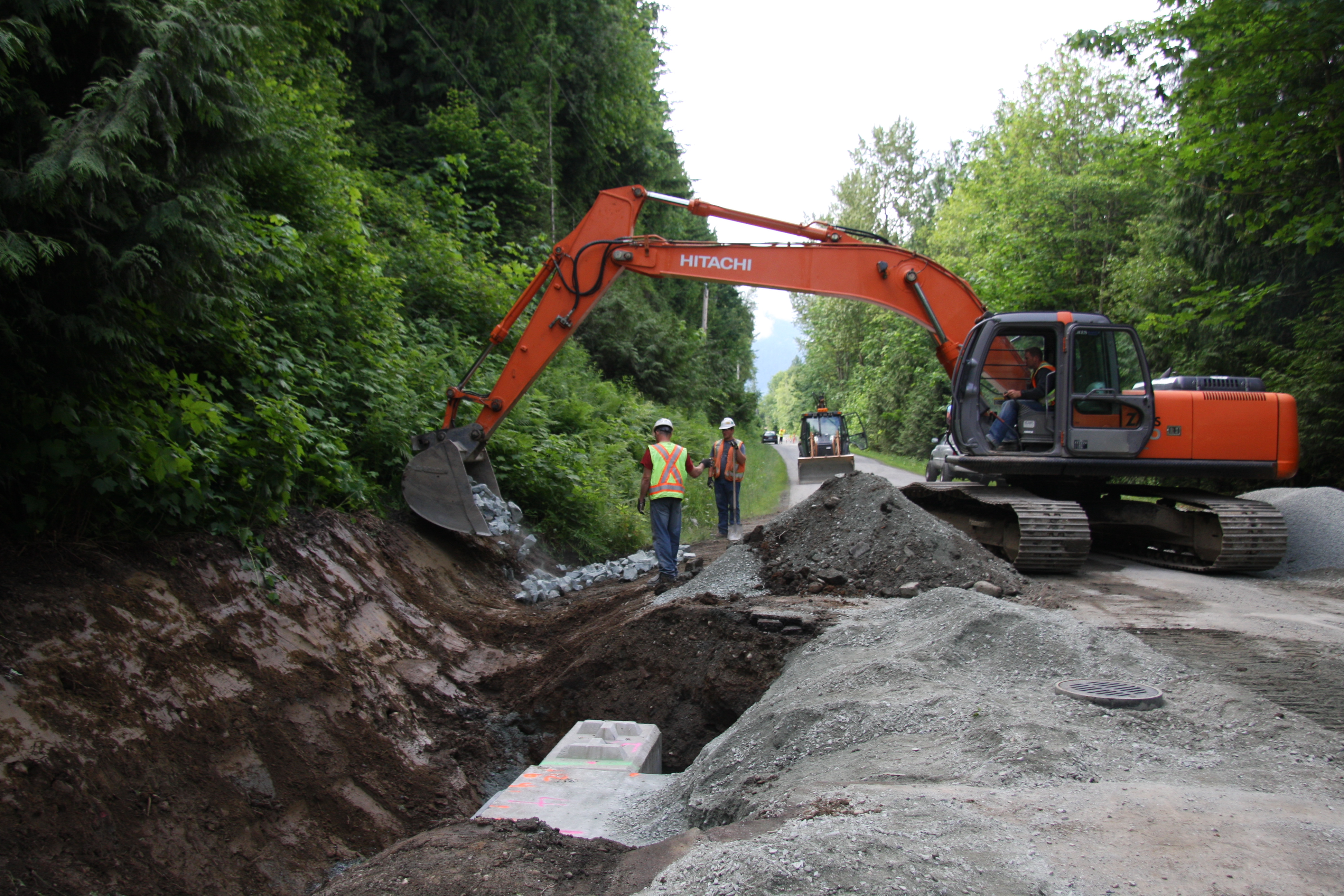Quality Road Construction for Long-Lasting Roads
Quality Road Construction for Long-Lasting Roads
Blog Article
Culvert Setup Made Easy: Step-by-Step Overview for Success
Setting up culverts might appear like a straightforward job, but guaranteeing a successful result needs cautious preparation and execution. From picking the ideal culvert dimension to integrating correct drainage measures, each action in the installment process plays a crucial duty in the functionality and longevity of the culvert system. By complying with a systematic strategy and paying focus to crucial details, the setup can proceed efficiently, lessening potential issues down the line. Stay tuned to reveal the important steps and considerations that can make culvert installation a seamless and successful venture.
Picking the Right Culvert Dimension
Choosing the appropriate culvert size is essential for ensuring reliable water circulation and structural integrity in culvert installation jobs - Pad Construction. The dimension of the culvert straight affects the flow ability of water with the structure. A culvert that is as well tiny can cause flooding and overflow, while one that is as well big may lead to decreased water velocity, possibly causing sediment build-up and obstructions
To determine the appropriate culvert dimension, elements such as the watershed location, top flow rates, and hydraulic efficiency need to be very carefully taken into consideration. Computations based on these parameters aid in selecting a dimension that can sufficiently manage the predicted water quantity while minimizing the risk of blockages and structural failing.
It is important to consult design guidelines and standards to make sure that the chosen culvert dimension fulfills the task requirements and regional policies (Pad Construction). By choosing the right culvert dimension, project managers can enhance water circulation, protect against prospective issues, and improve the total performance and durability of the culvert setup
Preparing the Setup Site
Efficient culvert installation requires meticulous preparation of the installment site to ensure ideal architectural assistance and capability. Prior to commencing the installment procedure, it is vital to remove the website of any particles, greenery, or obstructions that could hinder the culvert's placement.
In addition, it is essential to think about elements such as dirt make-up, groundwater degrees, and environmental influences when preparing the setup website. Performing a comprehensive site analysis can aid determine any type of possible difficulties or dangers that may influence the culvert's efficiency. By making the effort to prepare the setup website properly, you can aid assure an effective culvert installment that meets architectural requirements and guarantees long-lasting functionality.
Placing the Culvert Properly

The quality at which the culvert is positioned is important for maintaining a proper incline for water flow. Additionally, the culvert must be oriented appropriately to make sure that the inlet and outlet are look what i found in the appropriate places. Pad Construction.
Backfilling and Compacting the Dirt
Correct backfilling and compaction of the dirt around the culvert is important to guarantee security and protect against prospective issues in the future. When the culvert is correctly placed, the following crucial step is to backfill the area around it with directory suitable material. The backfill product must be without rocks, debris, and organic matter to prevent damages to the culvert. It is recommended to use granular product such as sand or gravel for backfilling, as it gives great drainage and compaction properties.
After putting the backfill product, it is very important to small it in layers of consistent density. Making use of a compactor or a mechanical meddle, small the dirt gently to stay clear of harming the culvert. Compaction helps in decreasing the possibilities of negotiation and guarantees consistent support around the culvert. It is vital to compact the soil evenly on all sides of the culvert to keep its architectural stability.
Correct backfilling and compaction not just supply stability to the culvert however additionally help in avoiding soil erosion and maintaining the durability of the culvert system.
Making Sure Proper Drainage Integration
Incorporating effective water drainage solutions plays an essential function in the general capability and durability of culvert setups. Appropriate drain integration is vital for managing water flow, stopping disintegration, and making sure the structural integrity of the culvert system. To attain this, it is important to create a detailed water drainage plan that considers elements such as the volume of water expected, the topography of the area, and the kind of find more information dirt existing.

Furthermore, incorporating features like disintegration control steps, such as riprap or vegetation, can better boost the performance of the drainage system. By very carefully planning and applying these drain remedies, culvert installations can function effectively and hold up against the test of time.
Conclusion
To conclude, proper culvert installment is essential for preserving reliable water drainage systems. By picking the right culvert size, preparing the installation website, putting the culvert properly, backfilling and condensing the soil, and ensuring appropriate water drainage integration, success can be accomplished. Adhering to these actions will assist make certain the durability and performance of the culvert, eventually adding to the total success of the water drainage system.
Report this page